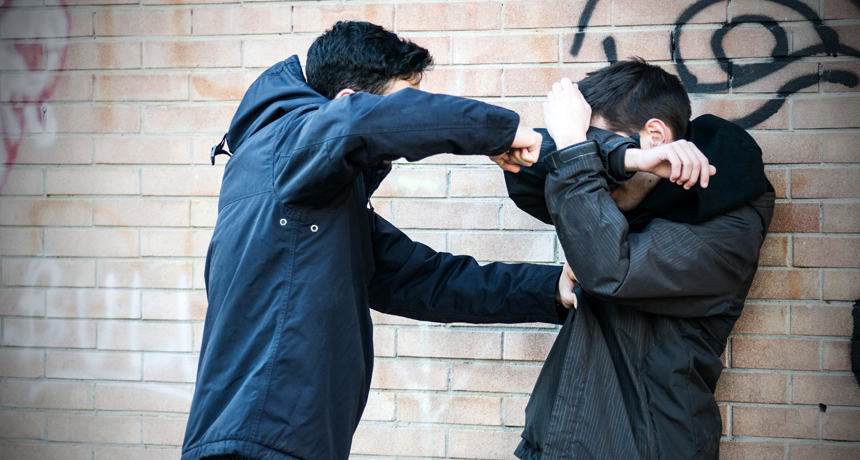Violence spreads like a virus
Friends of violent teens are more likely to become violent themselves

Teens who have violent friends are much more likely to become violent themselves, new data show.
mrohana/iStockphoto
Choose your friends wisely. Teens who don’t can wind up in violent situations. Having friends who get into fights nearly doubles a teen’s chances of doing the same. And the spread of violence doesn’t stop there. It moves through an individual’s social networks, spreading like a virus. That’s the finding of a new study by researchers at Ohio State University in Columbus.
“People learn aggression and violence the same way they learn other behaviors,” says Brad Bushman — “through direct experience and by observing others.”
Bushman is a psychologist. He studies the human mind. He worked on the new study with Ohio State political scientist Robert Bond. The pair used data from a long-term project called the National Longitudinal Study of Adolescent Health. This project is also known as Add Health. Three times over several years, researchers with Add Health interviewed 90,118 students from across the United States in grades 7 through 12. The interviews occurred at least one year apart.
Bond and Bushman focused on the first two sets of interviews, from the 1990s. At that time, the kids had still been in school. The researchers specifically looked at students who had at least one friend or sibling who had also been interviewed. They did that so they could probe any links between violence in social groups.
The scientists homed in on the answers to three questions. How often back then had the student been in a serious physical fight? Had the teen hurt someone badly enough that their victim had needed bandages or other medical care? And had the teen pulled a knife or gun on someone? The questions asked how often such events had happened during the year leading up to the interview. In the end, Bond and Bushman used 5,913 interviews that mentioned friends who were also in the study and 4,904 interviews that mentioned siblings.
Teens with friends who said during their own interviews that they had been in a serious fight were 48 percent more likely to get into one themselves. Having a sibling who had been in a fight similarly increased a teen’s chances of getting into a fight — here, by 38 percent. Teens with friends who had hurt someone badly enough to need medical attention were almost twice as likely to hurt someone badly themselves. And those whose friends had pulled a knife or gun were 40 percent more likely to do the same.
Those findings are staggering enough. But they’re just the start.
Not only were a violent teen’s close friends at high risk of showing violence. To understand how violence spreads within social groups, the researchers used a type of statistical method called network analysis. It allowed them to probe whether incidents of violence cluster together. That network analysis showed that when teens got into fights, violence increased among their friends’ friends, and in the friends of those people too — up to four people away from the original teen.
Bond and Bushman’s results were published in the February American Journal of Public Health.
Violence almost appears contagious
The researchers liken the spread of violence to infections. “Like other contagious diseases, one can prevent and treat violence,” Bushman notes. “Prevention comes in the form of avoiding exposure to violence.” The best way to treat the disease is to teach teens to use non-violent methods to resolve conflict. He suggests that teens who struggle with violence should learn how to negotiate and try to compromise.
Violence is typically not dealt with as a health issue. But this study takes a different approach to people and their problems, says Gary Slutkin, who was not involved with new study. Slutkin works at the University of Illinois in Chicago. There, he’s an epidemiologist, someone who typically studies the spread of disease. Slutkin’s work focuses on violence as a public health problem.
Slutkin agrees that “violence is a contagious disease.” It’s a health problem that has been misdiagnosed, he says. “It is important to understand problems,” he says and to “not judge people.”
Violence isn’t the only type of behavior that spreads through social networks, adds Bushman. Positive behaviors, such as cooperation, sharing and helping others can be contagious, too. So the next time a friend asks you to pitch in and help out, jump at the opportunity to spread a healthy contagion.







